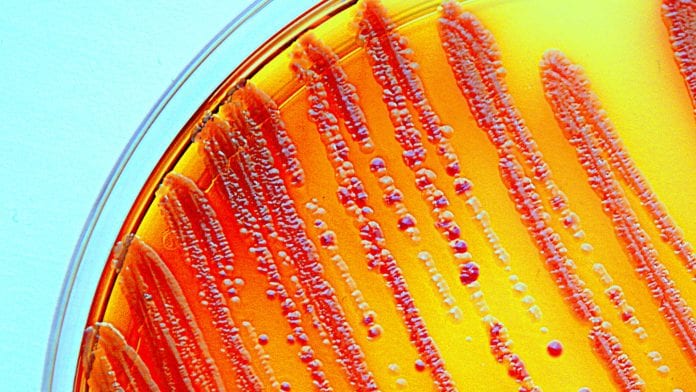
Researchers are testing a new drug that can kill a wide range of superbugs, including some antibiotic-resistant bacteria.
The research team from the Brinkman Laboratory at Simon Fraser University, Canada, are collaborating with U.S researchers to examine and test a new compound that has the potential to kill superbugs and some bacteria that has become resistant to all common antibiotics.
Tackling antibiotic resistance
The drug, known as AB569, contains ethylenediaminetetraacetic acid (commonly referred to as EDTA) and acidified nitrite, two inexpensive chemicals that the researchers discovered work together to effectively kill disease-causing bacteria without harming human cells.
Geoff Winsor, lead database developer at SFU’s Brinkman Lab explains: “We have a growing crisis with antibiotics becoming less and less effective, and treatments are failing; that’s why it’s important to test and develop new drugs and approaches to treat disease-causing bacteria that are highly resistant to existing antibiotics.”
Tackling bacteria that can cause infections
The SFU researcher team, which is headed by Professor Fiona Brinkman, were able to characterise, at the molecular level, how the chemicals in the AB569 compound were most likely working together to kill the notoriously drug-resistant Pseudomonas aeruginosa, using their Pseudomonas Genome Database hosted at SFU, and computer-based analyses of molecular data.
The Pseudomonas aeruginosa bacteria can cause infections in the lungs (pneumonia), urinary tract, or blood. This bacterium can is the leading cause of morbidity in patients with cystic fibrosis. People who are in hospital or have compromised immune systems are particularly at risk of developing an infection caused by this bacterium.
Dealing with this ‘priority pathogen’
The World Health Organization has categorised pseudomonas aeruginosa as a ‘priority pathogen’ of concern. These priority pathogens are highlighted as urgently requiring new treatments and posing the greatest threat to human health.
The top three priority pathogens include highly drug-resistant Acinetobacter baumannii, Pseudomonas aeruginosa, and Enterobacteriaceae. The AB569 compound has been shown to kill these bacteria, plus a wide variety of others, including the notoriously difficult to treat Methicillin-resistant Staphylococcus aureus or MRSA. The lab tests of AB569 showed promising results in treating priority pathogens, plus additional bacteria that cause foodborne illness such as E. coli and Listeria.
Winsor explains that: “AB569 will go through additional testing because it shows potential as non-toxic topical drug treatment for a wide range of infections.”
The AB569 compound was developed by a University of Cincinnati scientist and is now in the first phase of human trials. AB569 has been licensed exclusively to Toronto-based biotechnology firm Arch Biopartners.
























